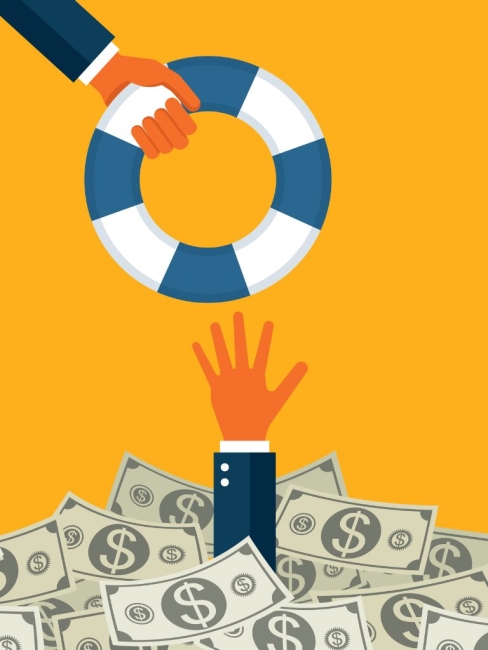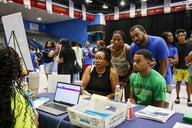You have /5 articles left.
Sign up for a free account or log in.

Getty Images
The U.S. Department of Education’s inspector general has released a scathing report detailing the department’s failure to hold student loan companies accountable and the resulting harm to borrowers from a series of malpractices. The independent watchdog’s report finds that loan servicers often failed to provide student loan borrowers with accurate information about their repayment options and placed them in more expensive plans even when more affordable options were available.
The alarming revelation comes on the heels of the nation’s top student loan official resigning from his post, declaring that the government “turned its back on young people and their financial futures … abandoning the very consumers it is tasked by Congress with protecting.”
These two disturbing events should serve as a wake-up call to the dire state of student loan indebtedness in America. If the federal government is failing to protect borrowers and look out for their interests, then leaders across all sectors must fill the void to help a generation being harmed by a broken system.
The latest figures are startling: 44 million people are on the hook for $1.5 trillion in outstanding student loans, a total debt size that’s more than tripled since 2005. Seven million undergraduate students now rely on federal loans to enroll in college, and seven in 10 students are graduating with over $30,000 in debt on average. While a college degree is still a great investment for the large majority of students, more must be done to help the many borrowers that end up walking on a financial tightrope.
Most concerning is the reputation that student loan companies have earned for harming borrowers. Citibank, Wells Fargo and Discover have all been fined for illegal student loan practices, and five states recently sued Navient for “illegally failing borrowers at every stage of repayment.” These lawsuits validate complaints that borrowers have expressed for years. Since 2011, the federal government has received 60,000 complaints from borrowers citing lost payments and paperwork, unexpected fees and conflicting information from their loan servicers that often leads to costly mistakes.
The combination of these factors is pushing the system to crisis levels. Every 28 seconds, another borrower defaults on his or her loans, joining eight million already in default. And the consequences are severe, such as seized wages and revoked driver’s licenses.
Beyond the impact to the current generation of graduates, the mounting student loan crisis risks scaring off the next generation of young people from ever attending college. Among a myriad of benefits, a college degree still provides a major boost to a young person’s lifetime earning potential. Some business leaders have fanned the flames by advocating that students skip college entirely, but this should not be the answer. If student debt continues to become the scarecrow of higher education, our country will be certifiably worse off with a less educated population.
It is clear that the federal government needs to hold student loan companies accountable and better protect borrowers. But the conversation should not stop there. We simply cannot afford to wait for our gridlocked capital to solve this alone. Colleges, employers, state and local governments, and financial institutions all must step up to help borrowers.
Despite the doom and gloom, a number of resources are already in place for these institutions to leverage in order to alleviate the debt burden. Not a single borrower with federal student loans should ever have to default thanks to income-driven repayment, a set of government repayment plans created to help borrowers struggling to make payments. By pegging the repayment schedule to one’s income, the government allows borrowers to significantly reduce payments, often by hundreds of dollars per month. All remaining loan balances are forgiven after either 20 or 25 years, depending on the program. Similarly, the Public Service Loan Forgiveness program was created to forgive the federal loans of those working for a nonprofit and government employer after 120 months, or 10 years, of repayment.
But while government estimates indicate that about 22 million Americans could qualify for an income-driven repayment plan, fewer than eight million have enrolled. Meanwhile, the government estimates that 10 million borrowers, nearly one in four, could qualify for Public Service Loan Forgiveness, yet only about one million have applied to date. Many similar assistance programs exist for members of the military, teachers and those with disabilities. All are underutilized.
Thankfully, this is one thing that leaders in all sectors can fix. Every college administrator should ensure their students and alumni know to enroll in an income-driven repayment plan if they are unemployed or underemployed when their first loan payment comes due after graduation. Nonprofit and government employers should include a signed Public Service Loan Forgiveness form as part of their onboarding process to facilitate enrollment for new employees. Private-sector employers should ensure employees have access to better guidance on loan repayment, and consider the benefits of a student loan contribution for their staff. Cities and states should run public service announcements about these loan-assistance programs in subways, bus stops and libraries. Each of these initiatives would go a long way to boost program enrollment and mitigate the number of defaulted loans.
Without a government watchdog protecting borrowers while debt levels continue to rise, the situation is bound to get worse. By working together, however, we can all do more to address this dire problem and save a generation from being crushed under the weight of debt. By doing so, we will ensure a more educated and prosperous future for our country.




